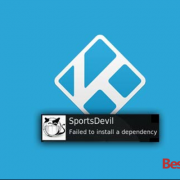Bitcoin’s journey from its inception in 2009 to its current status as a global digital currency and store of value has been marked by continual evolution. One critical aspect of this evolution is the implementation of software upgrades, often referred to as “forks,” which are essential for maintaining the network’s security, scalability, and functionality. Among these forks, “soft forks” play a pivotal role, allowing for backward-compatible updates without splitting the blockchain into two separate chains. To further understand the complexities of Bitcoin trading and investment, platforms like immediate-connect.com offer comprehensive educational resources, aligning traders and investors with knowledgeable investment education firms.
In this article, we embark on a comprehensive exploration of Bitcoin’s soft fork signaling mechanism, specifically focusing on the concept of “version bits.” This study seeks to unravel the intricacies of how Bitcoin miners and nodes signal their support for soft fork proposals, the challenges associated with this process, and the evaluation of its effectiveness in promoting network upgrades.
Understanding Soft Forks
Definition and Types of Forks in the Bitcoin Network
To understand soft fork signaling, we must first grasp the concept of forks within the Bitcoin network. Forks represent a fundamental part of blockchain technology and can be broadly categorized into two types: hard forks and soft forks.
- Hard Forks: Hard forks are blockchain upgrades that introduce changes that are not backward-compatible. As a result, they create a divergence in the blockchain, leading to the creation of a new chain with separate rules and history. Notable examples include the Bitcoin Cash (BCH) fork from Bitcoin (BTC) in 2017.
- Soft Forks: Soft forks, on the other hand, are backward-compatible upgrades. They introduce changes to the network’s consensus rules in a way that old nodes can still validate new transactions. This ensures the continuity of a single blockchain. Soft forks are the focus of our discussion.
Soft Forks vs. Hard Forks: Key Differences
Soft forks and hard forks differ in several crucial aspects, which influence how they are implemented and their impact on the network.
- Compatibility: Soft forks are compatible with older network nodes and do not create a new blockchain, while hard forks are not backward-compatible and lead to a split into separate chains.
- Miner Adoption: Soft forks typically require a supermajority (e.g., 95%) of miners to signal their support, while hard forks often involve a lower threshold.
- Network Security: Soft forks generally enhance network security by maintaining a single, unified chain, whereas hard forks can lead to security concerns as the new chain competes for mining power and security.
Why Soft Fork Signaling Matters
The successful implementation of soft forks depends on a signaling mechanism that allows miners and nodes to express their support for proposed upgrades. Soft fork signaling is vital for the following reasons:
- Consensus Building: It enables the Bitcoin community to reach a consensus on whether to adopt specific changes to the protocol.
- Network Stability: Proper signaling ensures that all participants are on the same page, preventing chain splits and maintaining network stability.
- Avoiding Disruption: Effective signaling minimizes the risk of contentious hard forks and the creation of competing chains.
The Role of Version Bits
What Are Version Bits?
Version bits are a crucial component of Bitcoin’s soft fork signaling process. They are a set of bits within the block header that miners can use to signal their support or opposition to proposed soft forks. Each bit represents a specific soft fork proposal, allowing miners to individually signal their stance on each one.
Historical Development of Version Bits in Bitcoin
The introduction of version bits in Bitcoin’s signaling mechanism marked a significant step forward in the network’s governance and upgrade process. It allowed for a more granular and flexible approach to signaling support for various proposals. Some key moments in the history of version bits include:
- BIP9: Bitcoin Improvement Proposal 9, introduced in 2015, formalized the use of version bits for signaling support for soft forks. It specified the rules and parameters for activating soft forks through version bit signaling.
- Segregated Witness (SegWit): The adoption of SegWit in 2017 was a watershed moment for version bits, as it demonstrated their effectiveness in achieving network upgrades. SegWit was activated through BIP9 version bits, highlighting their role in Bitcoin’s governance.
Signaling Mechanism: How Miners and Nodes Express Support
Miners use version bits to signal their support for a specific soft fork proposal by setting the corresponding bit to “1” in the block header’s version field. This signaling mechanism operates within predefined timeframes and activation thresholds as specified in BIP9.
Nodes on the network monitor the blocks being mined and tally the signaling votes from miners. Once a supermajority of miners (e.g., 95%) have signaled their support for a proposal within a specified timeframe, the soft fork becomes “locked in” and is scheduled for activation.
Challenges in Soft Fork Signaling
Miner Coordination and Activation Thresholds
One of the challenges in soft fork signaling is achieving a high level of miner coordination. For a soft fork to be successful, it typically requires the support of a supermajority of miners. This can be challenging to achieve, especially in a decentralized network with various mining pools and individual miners.
Activation thresholds, such as the 95% threshold for BIP9, are designed to ensure a high degree of consensus among miners before a soft fork is activated. However, this threshold can also make the process vulnerable to miner inaction or opposition, leading to delays or failed activations.
Potential Risks of Failed Soft Forks
When soft forks fail to activate, it can lead to uncertainty and contentious debates within the Bitcoin community. Failed activations may result from miner opposition, lack of coordination, or disputes over proposed changes. These situations can pose risks to network stability and hinder the implementation of important upgrades.
Evaluating the Effectiveness of Soft Fork Signaling
Metrics for Assessing Success
The effectiveness of soft fork signaling can be evaluated using several key metrics:
- Miner Adoption Rate: The percentage of miners signaling support for a soft fork proposal within the activation time frame.
- Node Adoption Rate: The percentage of network nodes that upgrade to the new soft fork-compatible software.
- Network Security and Stability: The impact of the soft fork on network security, stability, and overall performance.
Factors Influencing Signaling Outcomes
Several factors influence the success or failure of soft fork signaling:
- Economic Incentives: Miners’ economic interests play a crucial role in their decision to support or oppose a soft fork. Changes that enhance profitability are more likely to receive miner support.
- Developer Consensus: A strong consensus among Bitcoin developers regarding the need for a particular upgrade can influence miner and user sentiment.
- User Adoption and Demand: The willingness of Bitcoin users to adopt the new rules and use the upgraded software is a critical factor in signaling outcomes.
Controversies and Debates
Debates Surrounding Specific Soft Fork Proposals
Bitcoin’s open and decentralized nature often leads to heated debates and disagreements over specific soft fork proposals. These debates can revolve around technical details, economic implications, and philosophical differences within the community.
Centralization Concerns in Soft Fork Activation
Critics have raised concerns about centralization in the soft fork activation process, particularly regarding the 95% miner support threshold. Some argue that a single miner or mining pool with a significant share of the network’s hash power could potentially veto important upgrades, leading to questions about the network’s governance.
Community Reactions and Forked Blockchains
In cases where soft forks are highly contentious and fail to gain consensus, the Bitcoin community may resort to alternative solutions. This can result in the creation of forked blockchains, such as Bitcoin Cash (BCH) and Bitcoin SV (BSV), which implement different rules and visions for Bitcoin.
Future Trends in Soft Fork Signaling
Proposed Improvements to the Signaling Mechanism
Bitcoin’s development community continually seeks ways to improve the soft fork signaling process. Proposals for enhancing the mechanism may include adjusting activation thresholds, introducing more efficient signaling methods, or exploring decentralized governance models.
Potential Soft Forks on the Horizon
The Bitcoin network faces ongoing challenges and opportunities, and various soft fork proposals are in the pipeline. These proposals aim to address issues such as scalability, privacy, and security, while also maintaining the network’s decentralized nature.
Implications for Bitcoin’s Ongoing Development
The ability to effectively signal support for soft forks and implement upgrades is crucial for Bitcoin’s ongoing development and relevance. As the cryptocurrency ecosystem evolves, soft fork signaling will continue to be a key tool for shaping Bitcoin’s future.
Conclusion
In conclusion, Bitcoin’s version bits and soft fork signaling are crucial for the cryptocurrency’s governance and evolution, ensuring the integrity and continuity of its blockchain. While the successful activation of Segregated Witness highlights the effectiveness of this mechanism, challenges in miner coordination and centralization concerns persist. The future of Bitcoin’s governance will likely focus on improving signaling methods and addressing these issues to sustain the network’s growth. These lessons will remain invaluable as Bitcoin continues to evolve, shaping the future of decentralized blockchain networks and digital finance.













Comments